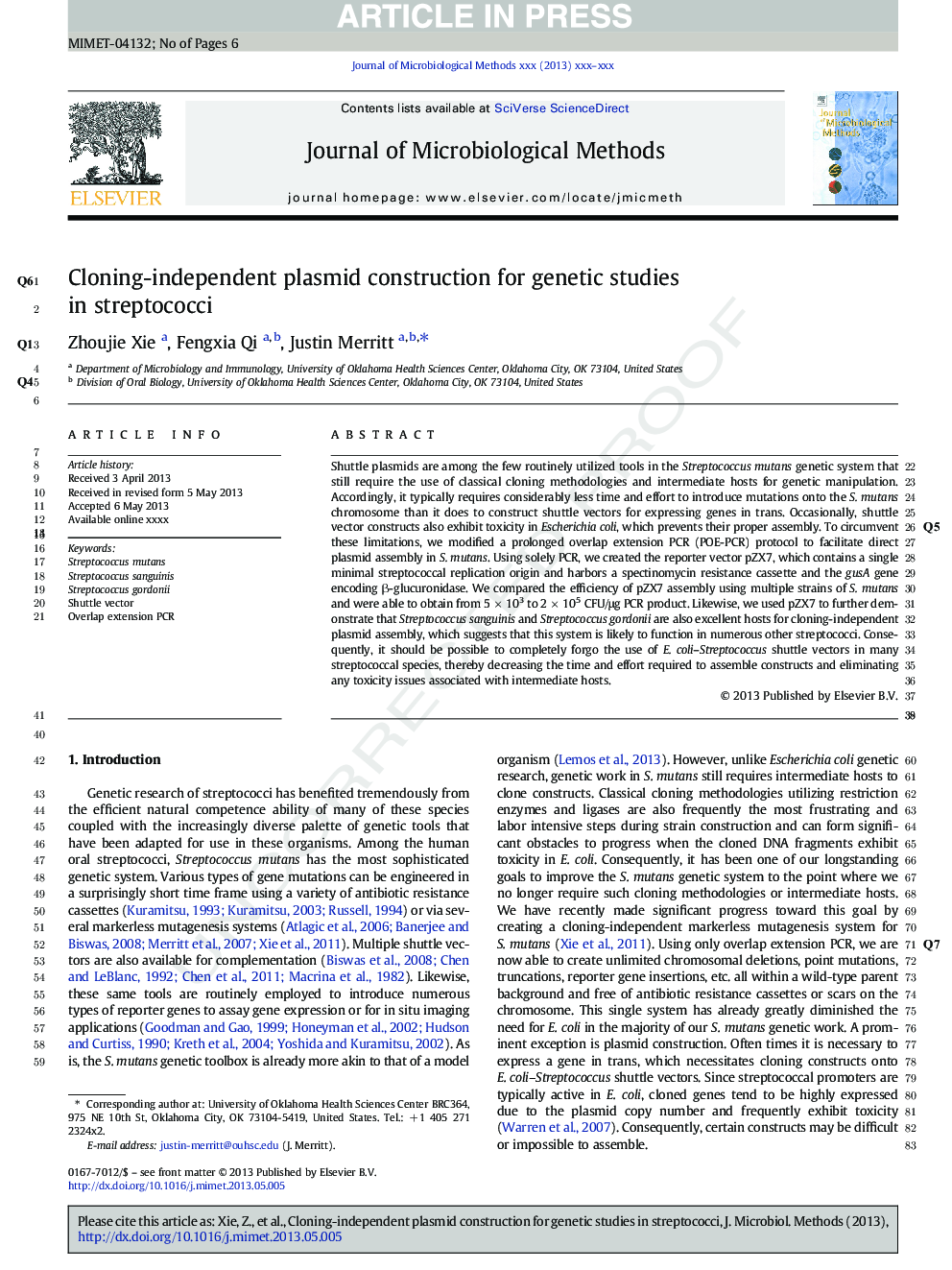| Article ID | Journal | Published Year | Pages | File Type |
|---|---|---|---|---|
| 10889518 | Journal of Microbiological Methods | 2013 | 6 Pages |
Abstract
Shuttle plasmids are among the few routinely utilized tools in the Streptococcus mutans genetic system that still require the use of classical cloning methodologies and intermediate hosts for genetic manipulation. Accordingly, it typically requires considerably less time and effort to introduce mutations onto the S. mutans chromosome than it does to construct shuttle vectors for expressing genes in trans. Occasionally, shuttle vector constructs also exhibit toxicity in Escherichia coli, which prevents their proper assembly. To circumvent these limitations, we modified a prolonged overlap extension PCR (POE-PCR) protocol to facilitate direct plasmid assembly in S. mutans. Using solely PCR, we created the reporter vector pZX7, which contains a single minimal streptococcal replication origin and harbors a spectinomycin resistance cassette and the gusA gene encoding β-glucuronidase. We compared the efficiency of pZX7 assembly using multiple strains of S. mutans and were able to obtain from 5 Ã 103 to 2 Ã 105 CFU/μg PCR product. Likewise, we used pZX7 to further demonstrate that Streptococcus sanguinis and Streptococcus gordonii are also excellent hosts for cloning-independent plasmid assembly, which suggests that this system is likely to function in numerous other streptococci. Consequently, it should be possible to completely forgo the use of E. coli-Streptococcus shuttle vectors in many streptococcal species, thereby decreasing the time and effort required to assemble constructs and eliminating any toxicity issues associated with intermediate hosts.
Keywords
Related Topics
Life Sciences
Biochemistry, Genetics and Molecular Biology
Biotechnology
Authors
Zhoujie Xie, Fengxia Qi, Justin Merritt,
